San Diego
Milwaukee Squares goes on the road to explore San Diego's public spaces.
Although officially in San Diego to attend the 2012 Esri User Conference (fancy digital mapping stuff), I took some time to also get to know the city a bit, particularly its signature public space, Balboa Park, as well as a smattering of smaller spaces and pedestrian amenities scattered throughout the Little Italy and downtown neighborhoods. In the way of context, the density and composition of much of the infill observed ranged from structures reminiscent of Milwaukeeʼs Historic Third Ward – three to five stories, mixed-use – to more significant 10-30 story highrises. One notable stylistic exception would be the preponderance of this cityʼs climate appropriate stucco and more modern design flares, including one particular striking steel and stone building I came across featuring a subtle mosaic distributed across its staggered balconies.

El Cid in Balboa Park
As regards public space proper, located just north of San Diegoʼs downtown is Balboa Park, which occupies an impressive 1200 acres of real-estate in this booming seaside city. In its central western portion (Iʼll admit that I only had time to explore this small quadrant), one finds an impressive collection of Spanish Colonial Revival buildings laid out along a central promenade known as El Prado and home to a plethora of museums, cultural institutions, fountains, and statues. This, taken together with the arid, jutting terrain and temperate climate, results in a space strongly reminiscent of the Ibero- American Exposition Grounds in Seville, Spain (there is even a replica of Sevilleʼs El Cid Statue). It is difficult to imagine a space of this scale and one boasting a comparable mix of amenities in Milwaukee – it is of course the product of a different cultural milieu – but a hypothetical equivalent might be something like a Kosciuszko or Humboldt Park housing the Museum of Natural History, Milwaukee Art Museum, Science Museum, etc, all together along a handsomely laid out and furnished central axis. This is not to suggest that Milwaukee has somehow missed the mark with the siting of these spaces, but only to give readers unfamiliar with Balboa Park a sense of what it is about.
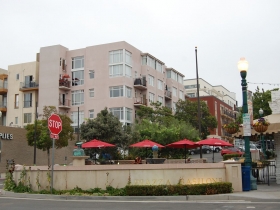
Bumpout
Finally, the cityʼs Little Italy offers an instructive model of balanced public-realm design at the street level. Replete with ample sidewalks, bump-outs with public furniture, and a couple of quirky, yet deftly utilized traffic calming/public park amenities, thereʼs plenty to like. My favorite was a large bumpout occupying approximately one corner of an intersection – essentially a larger “chocker” – that included a small fountain and circular stone benches. Apart from providing a place sheltered from the flow of traffic, this space also works to enforce the transition between the two-way and one-way lengths of this east-west street. The result is an amenity that functions on both a traffic engineering and public space level. Pleasantly practical.
As a first time visitor to the city, the transition from my airport-adjacent motel to the convention center located downtown was seamless, intuitive, and a real delight. Thereʼs no denying that the cityʼs modern trolley system had a large role to play in setting the tone of that experience, as did its litany of thoughtful public space amenities, only a few of which have been mentioned here. There are a number of lessons to be taken away. Indeed, the optimist in me sees good things in store for Milwaukee should a resolution ever be reached regarding the current utilities debacle and resulting streetcar impasse here at home. Perhaps nothing new or groundbreaking, but a reminder of what could be achieved here in Milwaukee.

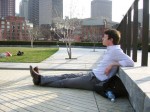
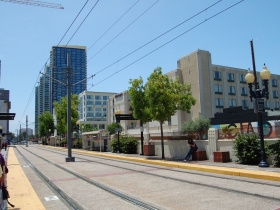
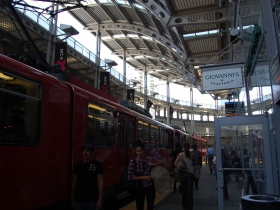
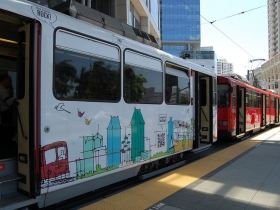
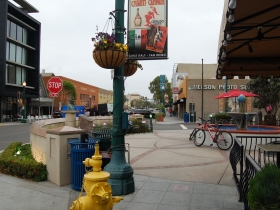
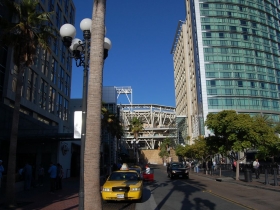


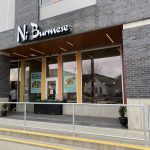
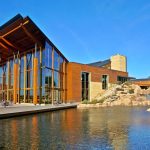










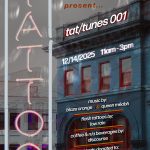





Great stuff.
Culturally, I find San Diego’s downtown to be pretty trashy (ie Water Street on steroids), but aside from that they’ve done a phenomenal job distinguising themselves from their neighbor to the north. And the goon squad around Milwaukee would be well served to take a ride on the Trolley.
Michael, excellent commentary on your visit. My wife and I took a trolly ride immediately upon arriving in San Diego. It gave us an opportunity to figure out the landscape and decide where we wanted to return and investigate in depth. I’m going to assume the many downtown visitors to Milwaukee will experience the same.